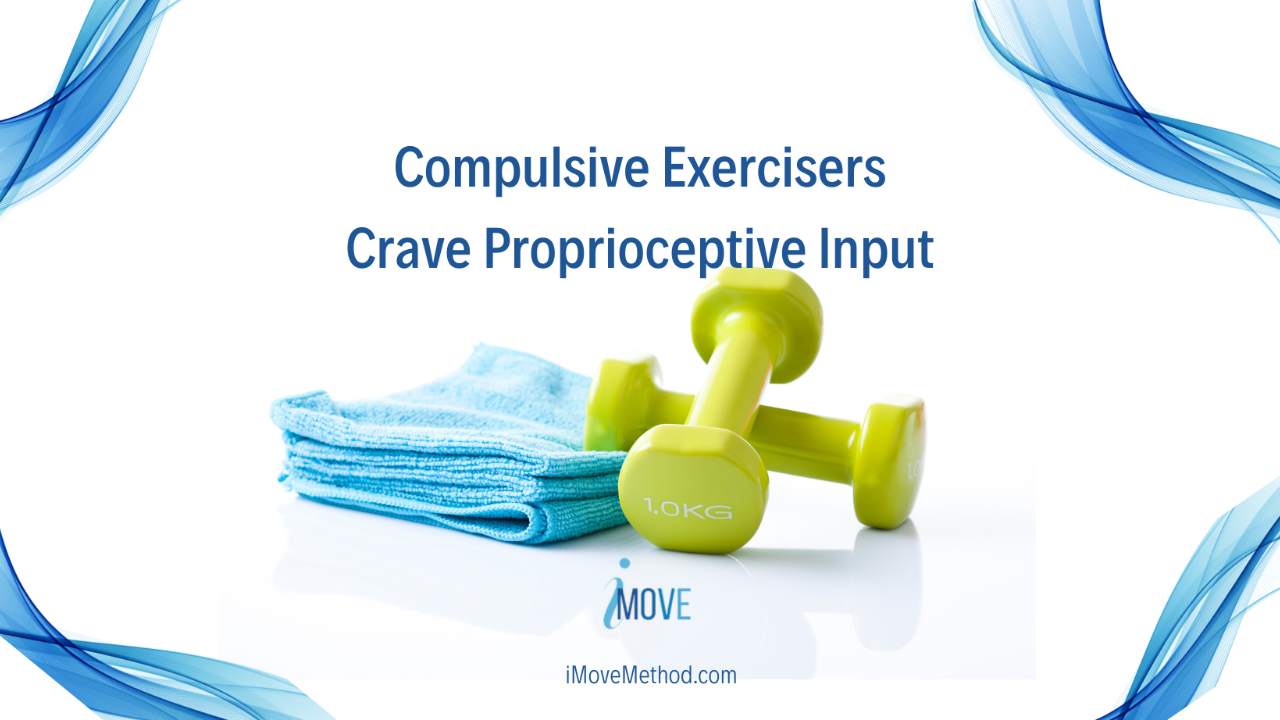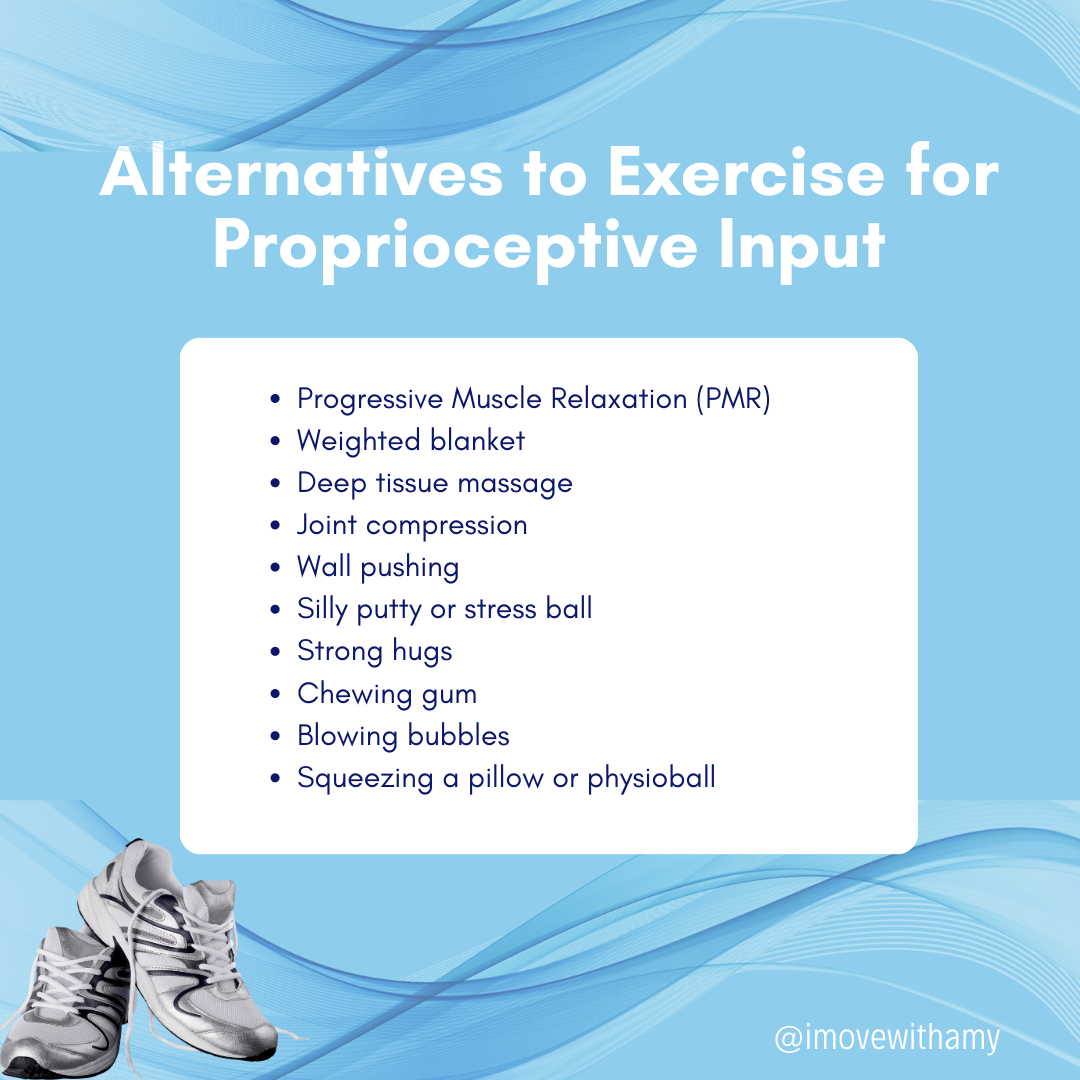Compulsive Exercisers Crave Proprioceptive Input
Aug 11, 2023
Individuals who exercise compulsively often crave proprioceptive input.
Exercise provides the proprioceptive input individuals are seeking when they turn to exercise. This is one thing that perpetuates the compulsive pattern. The good news is, there are other ways for them to meet this need without excessive exercise.
What is proprioceptive input?
Proprioception is our sense of our body in space. It’s body awareness. It helps us know where body parts are in relation to one another and assists in coordination. Those with deficits in proprioceptive awareness may bump into things, trip or fall often or feel like they’re floating aimlessly in space. The body can feel “unanchored” which lends to a sense of dysregulation.
We receive proprioceptive input when we are holding, lifting, pushing, pulling or lifting objects. Joint compression also offers proprioceptive input. What types of exercise come to mind that offer this input? Running, cycling and strength training are a few. There are many more.
Individuals who engage in compulsive exercise are attempting to regulate their system.
The good news is, there are other ways to receive the proprioceptive input they are craving. In the graphic below, you'll find a number of alternatives your clients can try to help regulate their nervous systems.

*This is not an exhaustive list and you will want to individualize it for your client(s)
What are the benefits of providing these alternatives?
Having alternative ways to regulate when exercise is not accessible is an important component of healing from compulsive exercise.
Exploring sensory integration and how this relates to compulsive exercise is a component of the iMove Method and something I teach in the iMove Training and Certification. The next training starts on October 20th. If you want to learn more about it and see if it’s a good fit for you, set up a time to meet with me here.
Compulsive exercise is a common component of eating disorders.
It's often the first presenting behavior and the last to go. It can be a precursor to relapse following eating disorder treatment and often goes unexplored in higher levels of eating disorder care.
 If you want to start helping clients heal from compulsive exercise and have not yet downloaded my free guide with a 3 step process that makes it easier to do this. Get your copy here.
If you want to start helping clients heal from compulsive exercise and have not yet downloaded my free guide with a 3 step process that makes it easier to do this. Get your copy here.
If you are interested in learning more about how you can become certified in the iMove Method® training, book a call with me and we can review any questions you have about adding this training and service to your practice. You can book a time with me via my online calendar.

